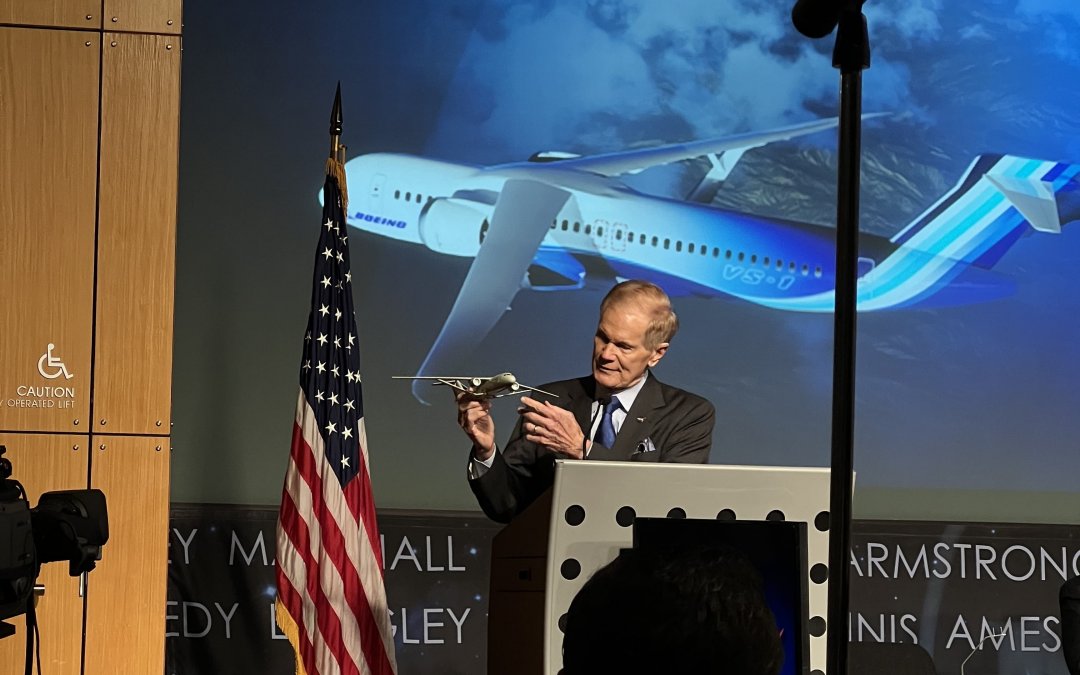WASHINGTON– NASA is flying closer to home this time, seeking to help traditional aircraft save fuel and lower costs.
NASA Administrator Bill Nelson announced Wednesday the Sustainable Flight Demonstrator project, which is aimed at bringing new climate-friendly technologies to single-aisle aircrafts. The project specifically focuses on developing a longer, thinner wingspan for small commercial planes – a change that would result in less drag and faster speeds.
The new wing design, called the Transonic Truss-Braced Wing, is expected to use 30 percent less fuel “relative to today’s most efficient single-aisle aircraft,” NASA said in a press release. Single-aisle aircrafts are responsible for about 50 percent of all global aviation emissions.
“We are also hoping that the technology we are working on is something you will be seeing across industry and at airports in the 2030s,” said NASA Deputy Administrator Pam Melroy.
The plane is projected to be in the air by 2028, according to NASA. Nelson said the overall goal is to meet President Biden’s U.S. Aviation Climate Action Plan of net-zero aviation carbon emission by 2050.
The project will be produced through a partnership with the aerospace giant Boeing. It will cost nearly $1.2 billion over seven years. Boeing and its partners will pay for the bulk of those costs, at $725 million, while NASA will invest $425 million.
“The reason we want industry to go further than they otherwise would and we want them to have skin in the game is to be confident that if this proves successful, they will find a way to commercialize,” said Bob Pearce, NASA associate administrator for the Aeronautics Research Mission Directorate, a department which is handles much of the agency’s research.
“This is high-risk technology and together by partnering between NASA and industry together we can go further. We can stretch further and take on higher risk that commercial industry can do on their own,” Pearce said.
NASA is seeking to encourage commercial airlines to adopt new technologies that will decrease emissions.
Yet, the key to achieving net-zero carbon emissions lies in other aspects of aviation. Pearce explained net-zero depends on the big thing other than technology and that is fuel. Sustainable aviation fuel could contribute to around 65 percent of the reduction in emissions needed by aviation to reach net-zero in 2050, according to the International Air Transport Association.
But even that goal is a challenge itself. Pearce said in an interview that the industry only produces 100 million gallons a year in sustainable fuel right now but will need 35 billion gallons a year to power the entire fleet.“That is a really high bar, right?” Pearce noted. “One of the things that NASA is exploring is other pathways.”
Still, the Transonic Truss-Braced Wing marks the introduction of a new series of technology that can help meet climate goals.
“We are gonna be looking at a bunch of different options outside of this because, that is really the primary U.S. industry strategy, to push harder on sustainable aviation fuels and, I think, that is the best bet,” Pearce said. “Someone like NASA can take those, look at alternatives and I think it is on us to do some of that.”


